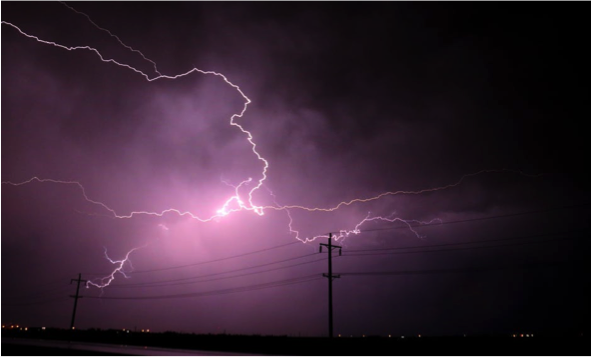 Picture yourself driving your car on the highway when all the of the sudden you see brake lights and are forced to slow down because of construction. As you come to a stop, you see workers repaving a damaged road. Now, cars begin to line up in front of you and behind you. Where do you go? Nowhere—you’re stuck.
Picture yourself driving your car on the highway when all the of the sudden you see brake lights and are forced to slow down because of construction. As you come to a stop, you see workers repaving a damaged road. Now, cars begin to line up in front of you and behind you. Where do you go? Nowhere—you’re stuck.
A ground rod, also known as an electrode, is similar to this highway scenario. It acts as the only electrical path to dissipate static discharge voltage (such as lightning) into the earth. When that path starts to break down, the static discharge has nowhere to go and puts the whole system at risk.
Many times, engineers are given the choice between three types of ground rods: copper-bonded steel, copper clad ground rods or galvanized steel for grounding systems. However, one material reigns supreme when it comes to strength, service life and overall investment. Hint: it’s copper bonded steel.
Continue reading below to learn why copper-bonded ground rods are the better choice for grounding systems versus other alternatives.
1. Stronger Characteristics for Dependable Service Life
Engineers should aim for ground rods that have a strong core for the ease of driving into the earth and high corrosion resistance. Copper-bonded ground rods have a high carbon steel core that is suitable for deep driving. A layer of nickel and then a coating of copper is electroplated on the steel core to provide corrosion protection This coating is not subject to the risk of bending or cracking.
Alternatively, copper clad steel ground rods are more likely to develop cracks and creases to the outer sheath. Additionally, galvanized steel ground rods have a higher corrosion rate, which will significantly reduce serviceable life and put the integrity of the entire electrical system at risk.
2. Lowered Risk of Corrosion
Ground rods are often selected based on their resistance to corrosion. Corrosion causes deterioration of a metal as a result of chemical reactions between it and the surrounding environment. A corroded ground rod can put the whole installation at risk because it weakens and breaks down the electrical path.
Copper-bonded rods have a high resistance to corrosion. Galvanized steel rods are more susceptible to corrosion than copper-bonded rods because the zinc coating degrades rapidly when placed underground. This causes the inner steel to be exposed and subsequently corrode faster. Additionally, it’s difficult to inspect this degradation below ground and as a result, the electrical installation can fail when subjected to a fault condition.
3. Longer Service Life for Cost Efficiency
Sometimes, installers or engineers choose a ground rod based on initial cost. However, it’s important to also consider the longevity and performance of the entire system—a higher initial cost may save money in the long run if the ground rod is more dependable and has a longer service life.
Unfortunately, over the lifetime of the installation, galvanized steel rods are not the most cost-effective option due to their short service life. Copper-bonded ground rods last significantly longer and require less or no maintenance due to their durability.
nVent ERICO offers a variety of copper-bonded ground rods that have a permanent molecular bond for reliable performance, including:
- Pointed copper-bonded ground rods for deep driving.
- Sectional copper ground rods that have threaded ends for use with couplers in deep drilled holes.
- Copper-bonded ground rods with one or two pigtails ready for connection to the electrical grounding system
Ground rods are the foundation to every electrical and lightning protection system. Although copper-bonded ground rods are more expensive up-front, they will cost less in the long run and extend the overall life of a grounding system.
nVent ERICO has the ground rod solution that you can depend on. Download the flyer.
Want to learn more about nVent ERICO’s copper-bonded ground rods? Check out our ground rod product page, download the nVent ERICO Grounding, Bonding and nVent ERICO Cadweld Solutions Guide or:

